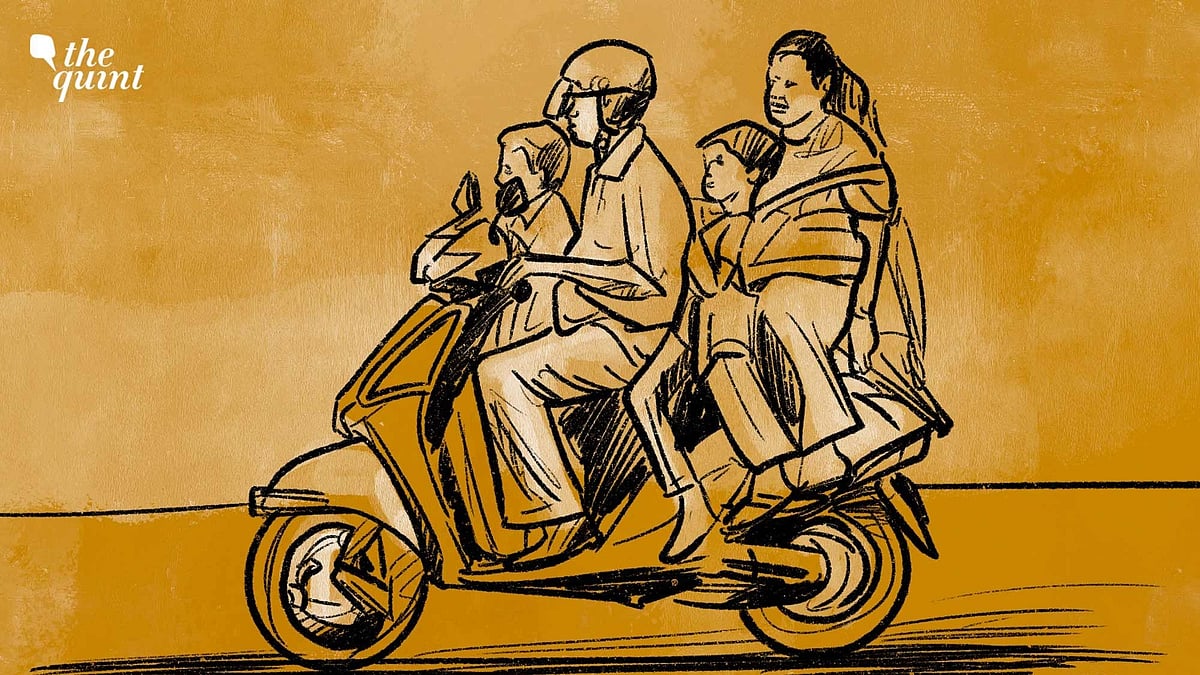
How Middle Class Got Left Behind in India's Growth Story
Middle class is worried they won't even be able to sustain their current standard of living: Aunindyo Chakravarty.

advertisement
If you, the reader, were born within the last 25 years, you've grown up in an India of glitzy malls, swish condominiums, multiscreen theatres, specialty restaurants, supermarkets, and air-conditioned classrooms.
That’s the world you are used to.
I grew up before this radical reshaping of India’s big cities. Our family was firmly middle class, and we got our first air conditioner, when I was fourteen. That too, because the doctor had recommended it for my mother’s high blood pressure.
Every night, my sister and I made our bed on the carpet in my parents' bedroom, so we could enjoy the communal coolness of the air conditioner.
Now, many middle-class homes have air conditioners in every room.
Back in the late 1980s, we didn’t have McDonald’s, KFC, or Domino’s. We ate Big Boy burgers, mutton sausage pizza, and Hot Chocolate Fudge at Nirula’s. Not as fast food, but as a proper restaurant meal. There were no malls. In fact, right after I got married in the early 2000s, my wife and I hired a car for fun and made a day trip from Delhi to Gurgaon to go mall-hopping. It was that much of a novelty back then.
From Optimism to Stagnation
This feel-good wealth effect began to wane by the mid-2010s. Almost everyone I know, around my age group, saw their incomes begin to stagnate. Salaries went up, but the rate of increase dropped sharply.
Now, everyone I talk to, who could be termed middle class, is growing anxious. Some are already in deep despair.
Unless you're a senior corporate honcho, and have broken into the top one percent of earners, most people are facing tough working conditions.
The Strain of Inflation and Stagnant Wages
Indeed, in many cases, middle managers are being put on PIPs or Performance Improvement Plans—a not-so-subtle hint to look for other employment. Such people are accepting lower pay packages in other companies, just to have a job.
Amid all this, the cost of everything that we consider a necessity – from cheese to chapstick – is rising.
Some pink-paper-pundits and stock market gurus might dismiss this as anecdotal speculation. But independent data clearly supports what we, the middle class, are experiencing in our daily lives.
Estimates made by the World Inequality Labs, associated with the French economist Thomas Piketty, show that middle-class incomes are growing at a much slower rate than India’s overall economy.
To establish this, I shall take two outer limits for middle-class income today —Rs 5 lakh and Rs 25 lakh per year.
Of course, whether this puts you in the middle class depends entirely on where you are in the circle of life. If you have just started working, live with your parents who take care of most of your expenses, Rs 5 lakh per year is decent pay.
On the other hand, that’s hardly enough if you are in your forties, live in a metro, and have a family with two children. For that, you will need at least Rs 12 lakh per year; Rs 25 lakh should make you reasonably comfortable.
Where would that put you in India’s income ladder today?
Slowing Growth in Middle Class Incomes
If we examine 10-year averages, over the 1990s, the real, inflation-adjusted income of this group was growing at just 2 percent per year. By the first decade of the 2000s, that accelerated to 5 percent, peaking in the 2003-2013 period, when it grew at more than 7 percent per year.
Remember, this is inflation-adjusted income. Which means that by 2013, an average middle-class family could buy twice as much of goods and services, as they could a decade earlier. If we break it down into smaller periods, the jump in incomes was even more stark. Average middle-class incomes, adjusted for inflation, were growing at nearly 9 percent per year in the boom years of 2003-2008.
The income growth began to decline from 2010-2011, a couple of years after the Global Financial Crisis pricked the financial bubble of the 2000s and sent the developed world into a recession.
Between 2002 and 2012, their real income grew at nearly 8 percent per year. That crashed to less than 3 percent between 2011 and 2021, and in the 2013-2023 period, the latest data shows that their real income growth have dropped even further, to less than 2 percent.
The Impact of Economic Decline on Middle-Class Aspirations
In the first decade of the millennium, those at the 98th percentile would have doubled their purchasing power in just nine years. At the present rate, it will take them 36 years.
When the middle class first realised their incomes were declining, they blamed it on corruption and misgovernance. They took out candlelight marches and gathered on street corners. It became the core support base of the Anna Andolan, and later the Aam Aadmi Party. Their belligerence was both tracked, and fanned, by the news media.
Today, the middle class seems to have given up all hope that things will change. In the absence of a supportive media, it is stuck in a state of helpless stupor. The question is: how long will this uneasy somnolence in the face of economic collapse last?
(The author was Senior Managing Editor, NDTV India & NDTV Profit. He tweets @Aunindyo2023. This is an opinion piece. The views expressed above are the author’s own. The Quint neither endorses nor is responsible for them.)
- Access to all paywalled content on site
- Ad-free experience across The Quint
- Early previews of our Special Projects
Published: undefined